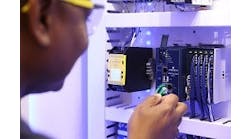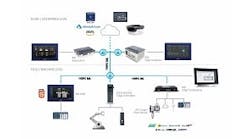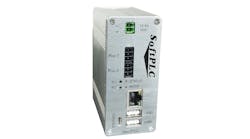Our fearless editor in chief and grill master, Mike Bacidore, interviewed Dick Morley a few months ago and has been posting video clips of that interview on the Control Design website. One of the segments was on the Internet of Things (IoT).
In 1997, Morley along with Patricia Moody wrote a book called The Technology Machine: How Manufacturing Will Work in the Year 2020.
Not to move the time clock ahead too fast, I wanted to look back into the book and see how close the content, guidelines and vision of future systems, most specifically IoT, were relative to today.
The book contains myriad ideas, thoughts and direct comments on how businesses are run, how businesses should be run and how to influence the people who work in the companies and for the companies. It also delves into the relationships between customers and suppliers, and it talks to real-time systems that must connect the two for the time-to-profit scenario. It’s capitalism at its best.
While the concepts are still applicable today and probably more than ever in our global economy, I was more interested in the technology machine as such and how the state of our industry today would be reflected in the words of wisdom of yesterday. In other words, how accurate were the visions of the future?
I used the book's index as a roadmap and compared that to the IoT—a collection of connected devices, creating a window into anything and everything, and large amounts of data being collected. The authors comment on the road ahead by stating, "Industrial automation will make manufacturing more decentralized, asynchronous, agent-based and self-organizing."
Also read: The father of the PLC talks about the Internet of Things
Hmm, I thought. A complex adaptive system, aka chaos. Attributes of chaos, for the most part, apply to the IoT. Some include distributed control, open environment and coevolving. Yep, that fits.
One of the milestones for new technology, according to Morley, is a 10x performance gain in measurable performance. Is IoT measurable to that level, or will it be? I’m not sure. New plants are still using the old tried-and-true technology machines called PLC/PAC platforms. But, with the potential of using the chaotic IoT, one might wonder which advancements can be made in the next five years toward the performance gain.
The definition of the performance gain is in the definer. Is it speed, ease of implementation, amount of data? I think that the IoT can deliver on many fronts.
In the second chapter, the authors talk to the grand challenges of the manufacturing process. It was really from a telecommunications roundtable discussion and applies very well to the intent of the technology machine. Applied to the manufacturing arena and the technology machine, it allowed the mere mortal to think aloud. One may have thought of the IoT, for instance.
I remember having a conversation with Mike Brooks, then of Indx and presently of Mtell, about how connected I/O should know who they are and they should be able to tell anyone who they are and what data they have available to whomever may want it.
I did get a funny look. And, since it was more than 15 years ago, it was part of a technological world that didn’t exist then, and even now may be elusive. However, having read Morley’s book, I am sure that this thought process was hatched after reading the book.
And, voila, the IoT is emerging as a technology that will challenge us all in varying ways.
The book also provides a quote from Bill Gates, who said, "640K ought to be enough for anybody." If we believed that then, we wouldn’t have flash drives of gigabytes for mobile storage.
This is what Morley was trying to allude to by writing the book. In these few excerpts, I have shown you that the father of PLC is more than a flash in the pan.
He talks to collaboration of manufacturing, which could easily be interpreted as IoT—the knowledge and communication of data that collaborate with each other, possibly without the use of a central processing device, which is truly distributed control at its best.
But Morley warns about having all of this technology in the machine running without the support of the knowledgeable worker. Truer words have never been spoken then or now.
I believe that the IoT, as Morley predicted, will be the chaos contribution to our future, and we will need to be sure that it is applied properly and intelligently. The vision that he and Moody present suggests that any of the "new" technologies that are to be applied in the coming years will have their pitfalls unless certain rules and benchmarks are followed.
Morley notes that breakthrough technologies—read, IoT—will increase productivity, enable functionality, empower the user and, in the end, provide optimization and survivability. It’s nice to know however that they, whoever they are, won’t be able to do it without us. The authors were on the mark. However, I am not sure that cars ever will be assembled at the dealer. Yes, yes he said it.






